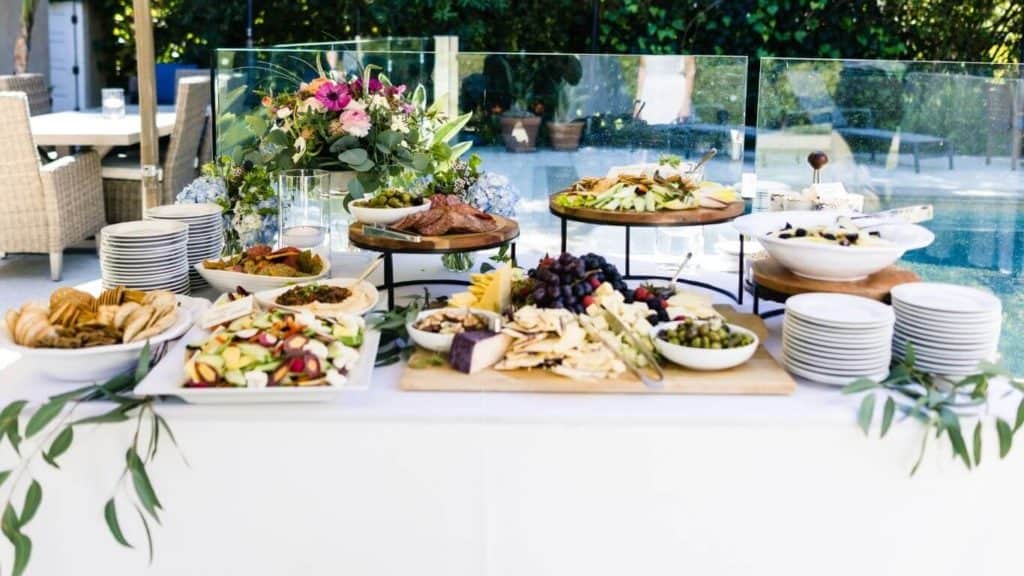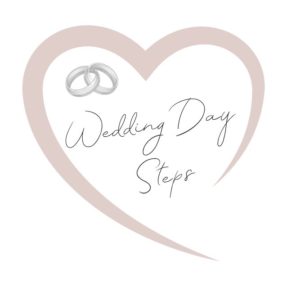This post contains affiliate links.
When I sold wedding packages, explaining a food and beverage minimum requirement was one of the most challenging concepts to explain to couples so they would have a clear understanding. If this was not presented clearly, couples would walk away and not book their wedding.
A food and beverage minimum is a fixed dollar amount set by the venue on the least amount the client must spend on catering to rent space. The food and beverage minimum is based on space capacity, date, and time of the event. This is how a venue places a value on what their banquet rooms are worth.

Here is a further explanation of a food and beverage minimum and how it can be reached with simple examples.
Why Would a Venue Require a Food & Beverage Minimum?
A food and beverage (F & B) minimum is another way for the venue to charge the consumer/client a rental rate for the space. For example, instead of charging the same flat rental rate on space to the consumer throughout the entire year, an F & B minimum amount can fluctuate during the year.
This helps the venue know what they can and can’t charge for space, but it is also fair to the consumer. For example, a venue I used to work for set a flat rate of $3,000.00 for their largest banquet room for four hours throughout the year. The $3,000.00 was regardless of the time of year and the demand for the space. Therefore, on slower months, the banquet hall would sit empty and not be rented out, or during busier months, the banquet hall would book quickly to a smaller event (a lost opportunity for revenue).
The downside to the above example is: If a venue doesn’t understand their slower, medium, and higher volume months, they can’t place a food and beverage minimum on the space that is fair to the venue and fair to the consumer.
Using the $3,000.00 rental example: If the venues’ slower time of the month is January since fewer weddings and special events are booked, lower the food and beverage minimum too, for example, $2,500.00++ (++ = service fee and tax). See the diagram example below on how to meet the F & B minimum.
Higher wedding season months are April – October, so the food and beverage minimum would be higher. Here is why renting space for the same flat room rental rate throughout the year is not good for the venue: In the above example, the banquet hall that rents for a flat rate of $3,000.00 has a guest capacity of 350. The F & B minimum should be based on the capacity of the space to calculate the minimum F & B dollar amount to reach.
A food and beverage minimum requirement takes the place of a room rental fee and requires the consumer to purchase the venues’ food and beverage services.
“The venue relies on appropriate food and beverage minimums in place to operate, and keep staff employed in order to serve you the consumer. “
Todd – Banquet Manager in Long Beach, CA.
Why is a Food & Beverage Minimum Important?
Suppose high season at a venue is a Saturday in May between the hours of 6:00pm – 11:00pm, and the banquet hall can accommodate up to 300 guests. In this scenario, that’s the market the venue caters to when determining the food and beverage minimum for the banquet hall during that time frame.
If a smaller-sized wedding wants to be in a large banquet hall, they can do so, but they have to meet the F & B minimum for that larger space. Or, book a smaller banquet hall with a lower F & B minimum that is more appropriate to their wedding guest count and budget.
In the above example, with the $3,000.00 flat rental rate: A wedding couple decides to book the banquet hall a year in advance and pay their deposit for a May date on a Saturday. The couple plans to invite 250 guests, but by their wedding date, only 100 guests RSVP? So the couple only pays the $3,000.00 rental rate plus food and beverage for 100 guests (plus service fee and tax).
However, the venue lost out, and if a food and beverage minimum was in the contract, the couple would have to purchase additional food and beverage to meet the required minimum for the space. So how would they do this? By serving a higher-priced dinner entree, purchase an open bar/drink package, or add additional appetizers for cocktail hour.
A food and beverage minimum is a guide and helps protect the venue from selling prime rental space during high season to the wrong market. Chances are another couple inquired about having their wedding at the venue with a larger guests count but were turned away since the date was no longer available.
On the flip-side, what if a couple wants to cut costs on their wedding venue and avoid the high wedding season altogether? Then a couple can still book at the venue of their dreams during a slower month, such as January on a Sunday, and not pay a higher food and beverage minimum.
How do you Calculate Food & Beverage?
Here are two examples of how to meet a food and beverage minimum:



Story Time
I am going to keep this story brief. A food and beverage minimum at a wedding is not an all-you-can-eat buffet. Sorry to disappoint you, folks, but a buffet at a wedding is not an invitation for wedding guests to go through the buffet line multiple times and then ask for a to-go box, just sayin’.
*** Check out my article on Wedding Buffet Ideas: What you need to know ***
Conclusion
A common misconception people have about a food and beverage minimum is, “why?” So I hope this article helps clear up any confusion you may have had. I also hope this article was a helpful guide in determining your wedding budget. It’s essential to be prepared in regards to the hospitality industry lingo, so when you are touring venues, a phrase such as “food and beverage minimum” makes sense to you.
~ Happy planning and enjoy your wedding day steps ~
